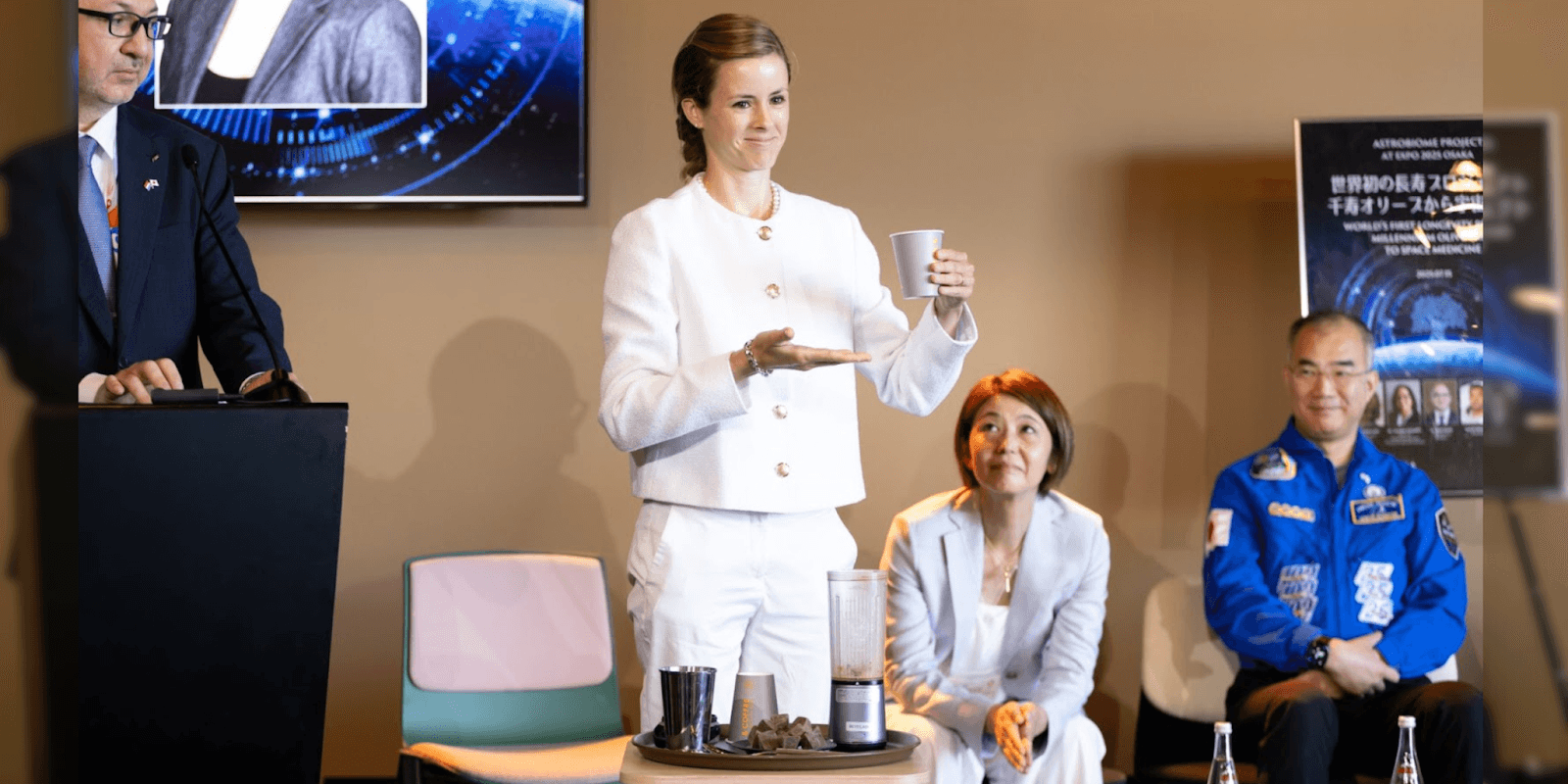Tipu Usha Vaithee Swaran: The Digital Architect of Enterprise Transformation
How a technology strategist is redefining the role of IT, one transformation at a time.
By
Oct 15, 2025
"Strategy without execution is hallucination; execution without strategy is oblivion."
This philosophy captures the essence of Tipu Swaran’s approach to technology transformation. As a Director of Technology Strategy & Transformation at a major Financial Services institution and member of the Forbes Technology Council, Swaran has spent two decades helping Fortune 500 enterprises reimagine their technology organizations—not as cost centers, but as drivers of competitive advantage.
His journey from software engineer to strategic advisor reflects a career built on bridging two worlds: the technical depth of implementation and the strategic priorities of the boardroom. It's a perspective that has enabled him to lead transformations delivering measurable impact: $500 billion in M&A technology strategy, $100+ million in average cost savings, and 50% operational efficiency improvements across some of the world's most complex organizations.
From Code to Context: The Foundation Years
Swaran's journey began in 2006 at Infosys Limited in Chennai, India, where he joined as a Technology Analyst working on Finacle, a sophisticated core banking platform. While many of his peers focused narrowly on system implementations, Swaran developed a broader lens.
"I realized early that writing good code wasn't enough," Swaran reflects. "The real challenge was understanding why the code mattered—what business problem it solved, and what customer experience it enabled."
Working across EMEA and APAC regions from Chennai to Manila, he led implementations for over ten financial institutions, managing projects valued at $5 million+ and achieving 90%+ on-time delivery. His rapid promotion from Analyst to Consultant within three years signaled an unusual ability: translating technical complexity into business value.
But Swaran recognized a gap. He understood technology deeply, but to truly transform organizations, he needed to speak the language of business.
It led him to pursue an MBA at the University of Arizona's Eller College of Management. This wasn't merely academic—it was a strategic investment in becoming a different kind of leader. And this period crystallized Swaran's unique value proposition: the rare combination of deep technology expertise with sophisticated business strategy capabilities. He understood technology architecture and SDLC processes, but he could also build business cases, conduct financial analysis, and translate technical capabilities into boardroom language.
The EY Years: Transformation at Scale
Upon completion of his MBA, Swaran joined Ernst & Young's Technology Strategy, Operations & Transformation practice in Chicago in 2013. Over the next decade, he would advise executives across over 20 Fortune 500 companies spanning financial services, manufacturing, healthcare, and beyond.
His approach was distinctive: tailoring "art of the possible" strategies aligned with each organization's unique context. The results were measurable: 5-10% revenue growth through strategic technology investments, 10-15% cost reduction via portfolio optimization, and enhanced customer satisfaction through digital transformations.
"I learned that organizations don't fail because of a lack of tools," Swaran observes. "They fail because they lack alignment between business and technology strategy."
His expertise spanned 15+ capability domains—from M&A and operating models to data analytics. His work on pandemic surveillance strategies for public health departments through analytics exemplified his approach: translating data into actionable insights that directly informed policy decisions during COVID-19.
Within his broad expertise, Swaran developed particular depth in M&A technology strategy, leading transformations for over $100 billion in transactions and managing workforce transitions for 1000s of technology employees. He redesigned organizations, established governance frameworks and implemented automated analytics solutions, achieving approximately 40% improvement in operational efficiency and 25% improvement in financial efficiency.
Beyond client work, Swaran shaped EY's practice itself, developing go-to-market strategies and building high-performing teams through MBA recruitment from top institutions. His engagements consistently achieved 95%+ client satisfaction.
Living the Transformation: From Advisor to Leader
In 2023, Swaran made a deliberate shift from advisory to corporate leadership, joining a major financial services institution as Director of Technology Strategy & Transformation. His impact was immediate: over $50 million in cost savings, 15% automation of BI/Analytics processes, and 20% rationalization of the technology portfolio.
Then came a $35+ billion acquisition, which was one of the largest financial services mergers in recent history.
"There's a profound difference between advising on M&A and living through one," Swaran reflects. "As a consultant, you recommend the path. As a leader inside the organization, you walk the talk—with your team, your technology, and your culture on the line."
Swaran led M&A technology strategy across divestiture and integration transactions, orchestrating capability due diligence, operating model redesign, enterprise-wide data migration, technology rationalization and workforce transformation, delivering millions in cost synergies while achieving 90% of projected KPIs and maintaining 99.9% system uptime during critical phases. The divestiture program he led transferred $10 billion in loan balances across 400,000 borrowers while limiting customer impact to less than 10%. It showcased new industry benchmarks for portfolio transfer excellence that could transform America's $1.7 trillion debt crisis affecting over 45 million borrowers.
What made Swaran uniquely qualified was his dual perspective: having advised on M&A from the outside and now executing it from the inside. He understood the frameworks, but more importantly, the human dimensions—cultural integration challenges, workforce concerns, and the need for transparent communication.
As he transitioned through the acquisition to the combined organization, Swaran embodied the very principles he had championed: successful transformation requires not just system integration, but cultural alignment and unwavering focus on delivering business value.
The Human Element: People-First Transformation
While the technical scope of Swaran's work is vast, what grounds his philosophy is a people-first approach.
"Technology transformations fail when we forget that organizations are made of people," Swaran emphasizes. "You can have the perfect strategy and the best technology, but if you haven't brought people along, you've built a house of cards."
This philosophy manifests in his project outcomes. Whether it’s the 50% efficiency improvements or the $100M+ average cost savings that he helped deliver, Swaran championed reinvesting those gains into workforce development programs—upskilling teams in AI, cloud and digital innovation that positioned both organizations and their people for sustained competitive advantage.
By embedding organizational change management throughout the transformation lifecycle, Swaran ensures individuals at every level are empowered to embrace change. His establishment of Centers of Excellence and transformation offices creates not just processes but partnerships—turning technology teams into strategic collaborators.
This balance between ambition and pragmatism, technology and humanity, makes his transformations endure cultural shifts.
Thought Leadership: Contributing to the Dialogue
Throughout his transformation work, Swaran's influence has extended to shaping broader industry conversations. In 2025, he was named to the Forbes Technology Council and recognized with the Future CIO 100 award.
As a member of Forbes Technology Council and IEEE Chicago Chapter, he has contributed perspectives on digital leadership, programmatic technology applications, achieving enterprise agility through technology, and reducing shadow AI without slowing innovation. His thought leadership draws from lived experience—real-world challenges of digital transformations, M&A integration, value-driven technology investments and committed people leadership.
"I write about what I've lived," Swaran says. "Executives need adaptable approaches and the ability to innovate under pressure. The bedrock of that intellectual flexibility is being open to different perspectives." He serves on the AI Advisory Board for HotTopics and as Vice President of the Illinois Council for Grateful Giving, Swaran continues positioning himself at the forefront of emerging technologies.
The Path Forward: A Dual Mandate
What distinguishes Swaran's approach is his refusal to separate strategy from execution.
"I've seen brilliant strategies fail because no one could execute them," Swaran notes. "And flawless execution that led nowhere because the strategy was uninformed. Excellence requires both."
His methodology is multi-dimensional: strategic leadership that anticipates market trends; transformational excellence that orchestrates large-scale change; operational effectiveness through cost efficiency; and organizational readiness that ensures sustainability. Swaran understands code because he wrote it, business cases because he built them, and transformations because he lived them—both as an advisor and as a leader during significant technology disruptions.
As industries evolve under digital acceleration and AI disruption, his perspective offers clarity. "We're at an inflection point," Swaran observes. "Organizations that view technology as an expense will struggle. Those that view it as an investment will thrive. The difference is in how leaders choose to leverage it."
From implementing banking software in Manila to leading complex financial services integrations in Chicago, Swaran has built a career on a fundamental belief: technology organizations should be strategic enablers of competitive advantage. His message to technology leaders is both humble and visionary: "We don't have all the answers, and that's okay. What matters is identifying the untapped opportunity, building the right partnerships, and staying focused on delivering measurable value. That's how technology organizations earn their seat at the strategic table."
Connect with Tipu Usha Vaithee Swaran
Tipu Swaran is a member of the Forbes Technology Council, IEEE, 2025 Future CIO 100 honoree, and serves on the AI Advisory Board for HotTopics. He currently leads Technology Strategy & Transformation at a major Financial Services institution. Connect with him on LinkedIn or through the Forbes Technology Council.














